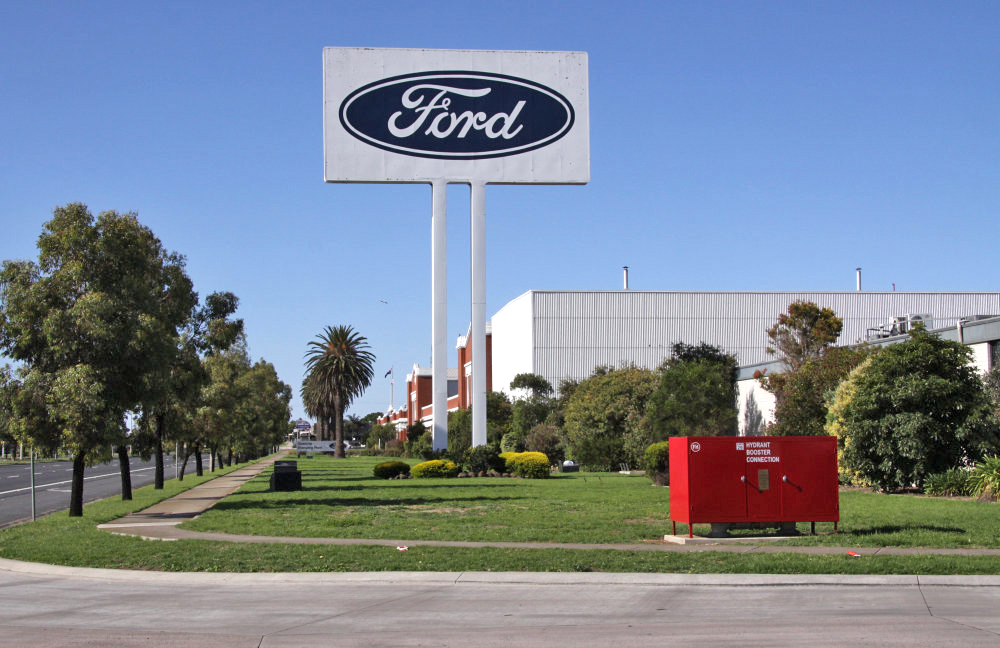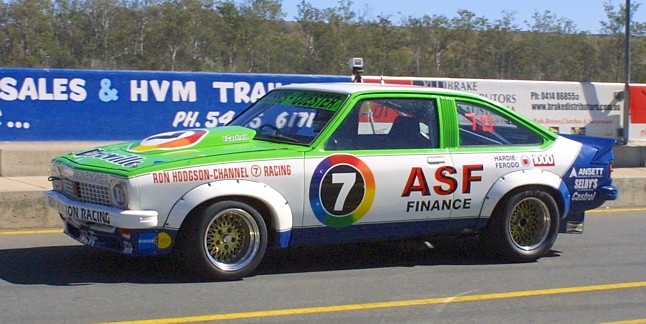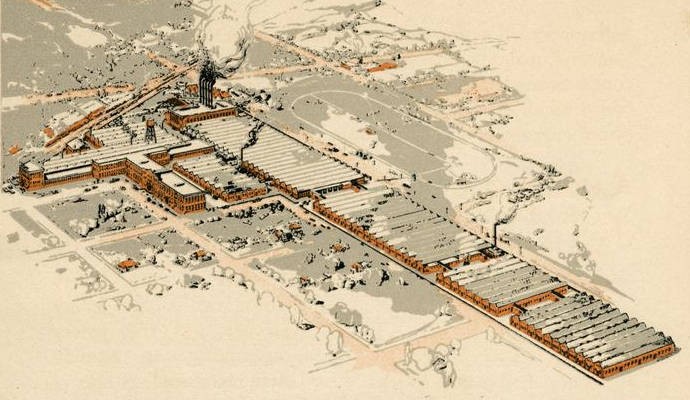|
Ford XF Falcon
The Ford Falcon (XF) is a full-sized car that was produced by Ford Australia from 1984 to 1988. It was the third and final iteration of the fourth generation of the Falcon and also included the Ford Fairmont (XF)—the luxury-oriented version. Between 1993 and 1999, this series provided the platform for the Falcon utility ( XG and XH) that was sold alongside the fifth-generation Ford Falcon sedans and wagons. Overview The XF sedan and wagon range was sold between October 1984 and February 1988, with the utility and panel vans running through to March 1993. The ride and handling were described as competent, but the unpowered steering was heavy at low speeds with an overly strong castor action after performing a manoeuvre such as a U-turn. Power steering was an option on higher-specification models, which in contrast was described by some as too light. Engines were modified to run on unleaded fuel from January 1986. The XF series remains Ford's best-selling Falcon model ever bu ... [...More Info...] [...Related Items...] OR: [Wikipedia] [Google] [Baidu] |
Ford Australia
Ford Motor Company of Australia Limited (known by its trading name Ford Australia) is the Australian subsidiary of United States-based automaker Ford Motor Company. It was founded in Geelong, Victoria, in 1925 as an outpost of Ford Motor Company of Canada, Limited. At that time, Ford Canada was a separate company from Ford USA. Henry Ford had granted the manufacturing rights of Ford motor vehicles in the British Empire (later the Commonwealth), to Canadian investors. Ford Australia's first products were Model T cars assembled from complete knock-down (CKD) kits provided by Ford of Canada. Of the many models that followed, the best known was the Falcon produced from 1972 to 2016, originally a US model introduced in Australia in 1960 and eventually adapted to Australian requirements and road conditions. History Early developments On 31 March 1925, Ford announced that its Australian headquarters were to be at Geelong, Victoria. The first Australian-built Ford was a Model ... [...More Info...] [...Related Items...] OR: [Wikipedia] [Google] [Baidu] |
Ford XH Falcon
The Ford Falcon (XH) is a commercial range of vehicles that was manufactured by Ford Australia from 1996 to 1999, as an upgrade to the XG series of utility and panel van models which were derived from the XF full-size car and had been marketed alongside the new series sedans since the EA26 project release in 1988. The XH incarnation brought closer levels of technology and comfort in comparison to the current sedan range on offer (EL), and was also the first Falcon utility vehicle to offer a V8 engine option in approximately fourteen years (more than four years later than the E series sedan range which reintroduced a V8 in 1992 in the form of the 5.0 (Windsor 302ci) sequential EFI V8 utilising EECIV engine management as seen in Ford US Mustang models). Introduction The Ford XH Falcon was introduced in April 1996 as a facelift of the Ford XG Falcon, which it replaced. Like the XG series, it was offered only in coupe utility and panel van body styles. The XH series was sold alongsi ... [...More Info...] [...Related Items...] OR: [Wikipedia] [Google] [Baidu] |
Jim Richards (racing Driver)
Jim Richards (born 2 September 1947) is a New Zealand racing driver who won numerous championships in his home country and in Australia. While now retired from professional racing, Richards continues to compete in the Touring Car Masters series. He was inducted into the New Zealand Motor-racing Hall of Fame in 1994 After a record number of starts and seven victories in the Bathurst 1000, and four Australian Touring Car Championships, Richards was inducted into the V8 Supercars Hall of Fame in 2006 and the Australian Motorsports Hall of Fame in 2015. He is the father of racing driver Steven Richards, and between them they have achieved 12 Bathurst 1000 wins, most recently in 2018. Racing career (New Zealand) Jim Richards grew up in South Auckland. He left school at 16 to start a mechanic's apprenticeship at Speedway Auto Services in Manurewa owned by Brian Yates, who was a top midget-racer in New Zealand. By then Richards had already been successful in junior go-karts in a kart ... [...More Info...] [...Related Items...] OR: [Wikipedia] [Google] [Baidu] |
Australian Stock Car Auto Racing
AUSCAR (Australian Stock Car Auto Racing) was an auto racing sanctioning body owned by Bob Jane, which ran American-style Superspeedway racing in Australia. The initial AUSCAR venue was the 1.801 km (1.119 mi), high-banked (24°) Calder Park Thunderdome Superspeedway in Melbourne, but over time the series expanded to include the Jane owned 1/2 mile (805 metre) Speedway Super Bowl at the eastern end of Adelaide International Raceway which first saw AUSCAR racing in 1990 (the Super Bowl was only other paved oval circuit in Australia with only 7° banking in the corners making it essentially a traditional flat track), the Surfers Paradise Street Circuit, and eventually several Australian road racing circuits including Calder Park's road course and the Oran Park Raceway in Sydney where racing was held under lights on the short version of the circuit. In the early 1990s, Jane and television station Channel 7 announced plans to turn the old Granville Showground trotting track which circl ... [...More Info...] [...Related Items...] OR: [Wikipedia] [Google] [Baidu] |
Group A
Group A is a set of motorsport regulations administered by the FIA covering production derived vehicles intended for competition, usually in touring car racing and rallying. In contrast to the short-lived Group B and Group C, Group A vehicles were limited in terms of power, weight, allowed technology and overall cost. Group A was aimed at ensuring numerous entries in races of privately owned vehicles. Group A was introduced by the FIA in 1982 to replace the outgoing Group 2 as "modified touring cars", while Group N would replace Group 1 as "standard touring cars". During the early years there were no further formula for production based race cars. Cars from multiple Groups could contest the World Rally Championship for Manufacturers for example until 1997 when the specific World Rally Car formula was introduced as the only option. In recent years Groups A and N have begun to be phased out in eligibility in championships though they continue to form the homologation basis for mos ... [...More Info...] [...Related Items...] OR: [Wikipedia] [Google] [Baidu] |
Ford Sierra RS Cosworth
The Ford Sierra RS Cosworth is a high-performance version of the Ford Sierra that was built by Ford Europe from 1986 to 1992. It was the result of a Ford Motorsport project with the purpose of producing an outright winner for Group A racing in Europe. Development The project was defined by Stuart Turner in the spring of 1983. He had recently been appointed head of Ford Motorsport in Europe, and he realised right away that Ford was no longer competitive in this area. Turner got in touch with Walter Hayes, at the time the vice-president of public relations at Ford, to get support for the project. Hayes had earlier been the driving force behind the development of the Ford GT40 that won Le Mans in 1966, and the Cosworth DFV engine that brought Ford 154 victories and 12 world championships in Formula One during the 1960s and 1970s. Hayes found the project very appealing and promised his full support. Turner then invited Ken Kohrs, vice-president of development, to visit Ford's ... [...More Info...] [...Related Items...] OR: [Wikipedia] [Google] [Baidu] |
Ford Mustang (third Generation)
The third-generation Mustang was produced by Ford from 1979 until 1993. Built on Ford’s Fox platform, it is commonly referred to as the Fox body Mustang. It evolved through several sub-models, trim levels, and drivetrain combinations during its production life. It underwent updates for the 1987 model year and seemed destined for replacement with a front-wheel drive Mazda platform. However, company executives were swayed by consumer opinion and the rear-wheel drive Mustang stayed, while the front-wheel drive version was renamed the Ford Probe. Enthusiasts group the generation into two segments: the 1979–1986 cars, with their quad headlight arrangement, and the 1987–1993 cars, with their aerodynamic composite headlamps and front fascia styling. Production ended with the introduction of the fourth-generation Mustang (SN-95) for the 1994 model year. 1979–1982 The 1979 model year Mustang was based on the Fox platform. This chassis was "Ford's initiative to build a one-s ... [...More Info...] [...Related Items...] OR: [Wikipedia] [Google] [Baidu] |
Australian Touring Car Championship
The Australian Touring Car Championship (ATCC) is a touring car racing award held in Australia since 1960. The series itself is no longer contested, but the title lives on, with the winner of the Repco Supercars Championship awarded the trophy and title of Australian Touring Car Champion. History The first Australian Touring Car Championship was held in 1960 as a single race for Appendix J Touring Cars. This was reflected the rising popularity of races held for passenger sedans; as opposed to those for purpose built open wheel racing cars, or sports cars. The race was held at the Gnoo Blas Motor Racing Circuit in Orange in rural New South Wales, west of Sydney. It was won by journalist racer, David McKay driving a Jaguar 3.4 Litre prepared by his own racing team, which to this point had been better known for preparing open-wheel and sports racing cars. The early years of the ATCC saw the annual event held mostly at rural circuits, before finally visiting a major city circu ... [...More Info...] [...Related Items...] OR: [Wikipedia] [Google] [Baidu] |
Automotive Industry
The automotive industry comprises a wide range of company, companies and organizations involved in the design, Business development, development, manufacturing, marketing, and selling of motor vehicles. It is one of the world's largest industry (economics), industries by revenue (from 16 % such as in France up to 40 % to countries like Slovakia). It is also the industry with the highest spending on research & development per firm. The word ''automotive'' comes from the Greek language, Greek ''autos'' (self), and Latin ''motivus'' (of motion), referring to any form of self-powered vehicle. This term, as proposed by Elmer Ambrose Sperry, Elmer Sperry (1860-1930), first came into use with reference to automobiles in 1898. History The automotive industry began in the 1860s with hundreds of manufacturers that pioneered the Brass Era car, horseless carriage. For many decades, the United States led the world in total automobile production. In 1929, before the Great Depression, ... [...More Info...] [...Related Items...] OR: [Wikipedia] [Google] [Baidu] |
Button Car Plan
The Button car plan, also known as the Button plan, was the informal name given to the Motor Industry Development Plan, an Australian federal (Labor) government initiative intended to rationalise the Australian motor vehicle industry and transition it to lower levels of protection. It took its name from Senator John Button, the then federal Minister for Commerce, Trade and Industry. Initial planning Industry consultation began in mid-1983 and the scheme was announced in mid-1984. It came into effect in 1985, after Senator Button visited Japan to inform the car companies there of the content of the plan. At the time of the plan's inception, Australia's motor industry was heavily protected by import tariffs, and quotas or quantitative restrictions on imports. These measures were used to support local assembly of thirteen models by a range of manufacturers. The Button car plan aimed to slash the number of locally manufactured models to six, by forcing industry consolidation—� ... [...More Info...] [...Related Items...] OR: [Wikipedia] [Google] [Baidu] |
Nissan Motors
, trading as Nissan Motor Corporation and often shortened to Nissan, is a Japanese multinational automobile manufacturer headquartered in Nishi-ku, Yokohama, Japan. The company sells its vehicles under the Nissan, Infiniti, and Datsun brands, with in-house performance tuning products (including cars) labelled Nismo. The company traces back to the beginnings of the 20th century, with the Nissan ''zaibatsu'', now called Nissan Group. Since 1999, Nissan has been part of the Renault–Nissan–Mitsubishi Alliance (Mitsubishi joining in 2016), a partnership between Nissan and Mitsubishi Motors of Japan, with Renault of France. , Renault holds a 43.4% voting stake in Nissan, while Nissan holds a 15% non-voting stake in Renault. Since October 2016 Nissan has held a 34% controlling stake in Mitsubishi Motors. In 2013, Nissan was the sixth largest automaker in the world, after Toyota, General Motors, Volkswagen Group, Hyundai Motor Group, and Ford. In 2014, Nissan was the largest car ... [...More Info...] [...Related Items...] OR: [Wikipedia] [Google] [Baidu] |
Badge Engineering
In the automotive industry, rebadging is a form of market segmentation used by automobile manufacturers around the world. To allow for product differentiation without designing or engineering a new model or brand (at high cost or risk), a manufacturer creates a distinct automobile by applying a new "badge" or trademark (brand, logo, or manufacturer's name/make/marque) to an existing product line. Rebadging is also known as '' rebranding'' and ''badge engineering''; the latter is an intentionally ironic misnomer, in that little or no actual engineering takes place. The term originated with the practice of replacing an automobile's emblems to create an ostensibly new model sold by a different maker. Changes may be confined to swapping badges and emblems, or may encompass minor styling differences, as with cosmetic changes to headlights, taillights, front and rear fascias and outer body skins. More extreme examples involve differing engines and drivetrains. The objective is "to ... [...More Info...] [...Related Items...] OR: [Wikipedia] [Google] [Baidu] |
.jpg)






